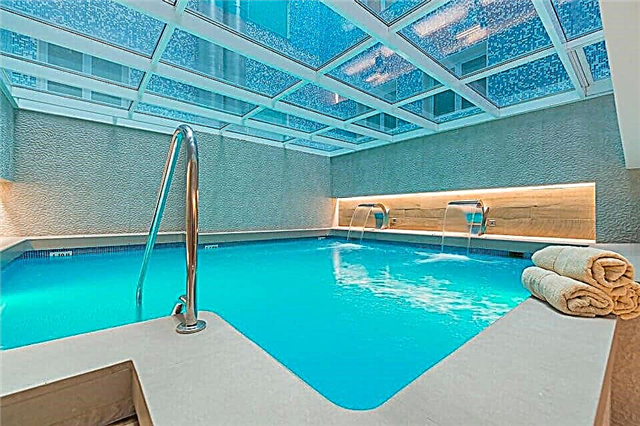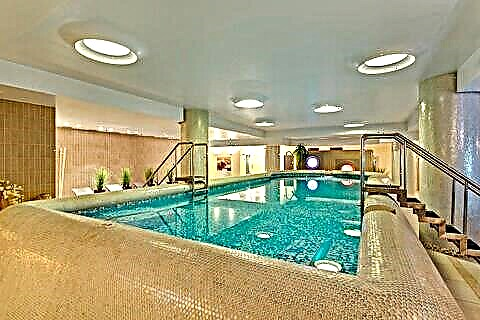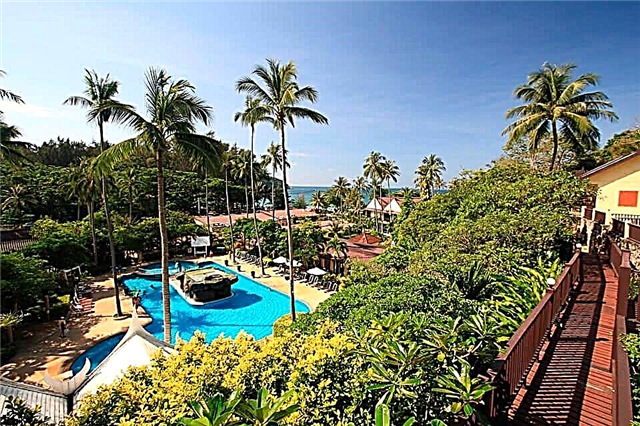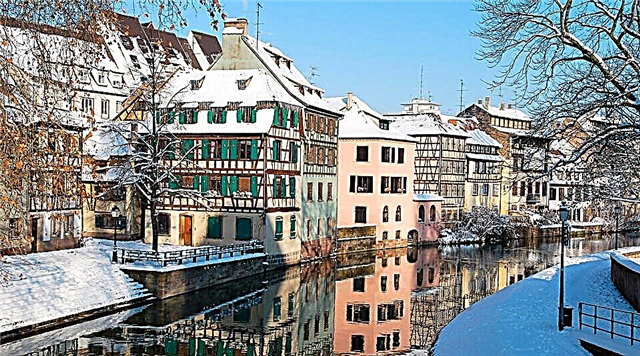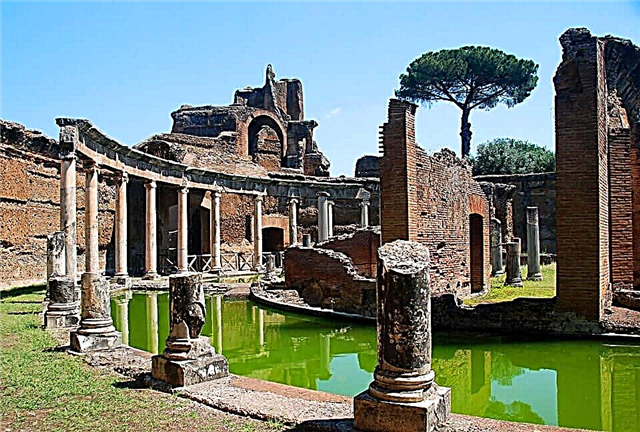Beautiful Italy, romantic, loud-voiced, passionate and hospitable, has attracted people from all over the world for a long time. Great artists, singers, composers have come and come here to be inspired by the beauty of nature and learn from their generously talented colleagues. The cradle of the great Roman emperors, the birthplace of famous masters of painting, singing, cinema, has preserved unique monuments of the past. One of these cultural and historical attractions is Villa Adriana in Tivoli, a unique architectural and landscape masterpiece of the 2nd century. n. e., included in the list of World Heritage Sites.
Construction history

Even by the remaining 5th part of the buildings, one can judge the scale of the construction of a residence for the most progressive of the Roman emperors, Hadrian. He loved to travel, accompanied by artists, making sketches of the structures that the emperor liked. As a result, he had the idea to immortalize his name in an extraordinary architectural complex - this is how Adrian's villa appeared on an area of 300 hectares.
The tranquil secluded place of Tivoli was chosen on the slopes of the Tiburtine mountains (30 km from Rome). The emperor himself designed the plan and details of the future residence - a haven for philosophical reflection and immersion in oneself. The project took 20 years (117-138 g) almost until the very death of Adrian.
Architecture

Various buildings were erected from limestone mined in the Tiburtinsky mountains. On a vast territory, magnificent gardens were laid out, picturesque ponds were arranged, a temple, a theater, an academy, a museum, office premises, and baths were built. Many artistic elements adorned the buildings outside and inside. Equestrian competitions were held at the hippodrome. The entire complex was surrounded by high fortress walls, the power of which can be felt even today. On an area of 1 sq. km 30 objects were erected, representing Greece, Egypt, Asia based on the impressions of Adrian.
The mixture of architectural styles and trends has revealed real architectural masterpieces to the world. Ancient statues of famous masters were delivered from Greece, some of which have survived to this day. The territory of the residence was divided into several zones: the personal space of the emperor (Bolshoi Peristili), houses for the suite, guest rooms, office and administrative buildings. The location on the slope allowed the construction of many fountains and pools, using the natural slope for the flow of water.
What to watch

Today, only the 5th part of its former splendor remains from the former “Roman Versailles”. Merciless time, centuries-old excavations disfigured the architectural and landscape masterpiece. For several centuries it was in complete oblivion, turning into silent ruins. In 1400 (Renaissance) Pope Pius II paid a visit here, who saw, in his words, a den of snakes. After that, excavations and subsequent research began. Unique finds are now kept in various museums around the world.
But even today there is something to see here in order to feel the grandiose scale and artistic value of the once beautiful object. It is a matter of honor for every tourist to visit a thematic museum. You can admire the ponds, colonnades, intricate architectural details while walking through the ruins of ancient temples, libraries, baths. Climbing up to the panoramic terrace, you can see delightful landscapes. Poikile, Cento Camerelle, Big and Small Terme, Pretoria, the Maritime Theater and other ruined objects amaze the imagination.
Poikile

One of the most grandiose structures in the villa reproduces the famous Athenian monument "Poikile". It was a rectangular peristyle with rounded corners (a platform 232 m long and 97 m wide, surrounded by walls and a colonnade) Fragments of 9 m high walls with mesh brickwork have survived to this day. In the middle there was a rectangular pool (now it is cleaned and filled with water).
There was probably a hippodrome around the pool. The Poikile complex included premises for the slaves serving the villa - "one hundred rooms". They were beautifully decorated with mosaic floors decorated with geometric patterns. In the northeastern corner of Poikile, the Hall of Philosophers (Temple of the Stoics) was built, where 4 side entrances led. On its central wall, 7 niches are carved, apparently intended for the statues of 7 ancient sages.
Close to the Hall of Philosophers was a round building - the Marine Theater, built in 117, as evidenced by the stamp on the brick. Nearby stood an elliptical peristyle with Ionic marble columns, inside which a 5-meter wide channel faced with marble was dug. In the middle of the channel there was an island in the form of an ellipse, where a bridge led, turning on an axis. Here Adrian loved to relax, spending time reading scrolls.
Small terms

Excavations carried out in the 20s of the 20th century have uncovered several buildings, united in style and architecture into a complex. An underground road leading from Cento Camerelle (one hundred rooms for slaves) led to them. Archaeologists concluded that these were Roman baths. Upon careful examination, they were conventionally designated as Small and Large terms, separated by a courtyard.
Small baths were intended for bathing women. In the vaulted room, decorated with columns, the remains of a heating system of two types are still preserved: with dry hot air and humid steam. In the walls you can see recesses in which baths with water of different temperatures were installed. Fragments of a tiled floor have been preserved in some places.
Along the walls of the bathing hall there were stone seats-boxes, where bathers rested after the steam room. Fragments of such lodges remain today. The remains of partitions indicate the presence of premises for various procedures: massages, rubdowns, masks.
Hotel Torre Sant'Angelo
Tivoli
Located in a medieval castle in quiet hills

Cristallo relais
Tivoli
Located 5 minutes from Villa Adriana

Large baths

Larger buildings with large halls were intended for men. In fact, it was a whole complex where swimming was combined with sports, philosophical conversations, reading, etc. The round hall, illuminated by windows, probably served as a steam room. Sunlight penetrating through the windows heated the sand on the floor, raising the temperature in the room.
Judging by the ruins, there was a sports hall (palestra) in which men competed in speed, wrestling, and performed various exercises, as was the case in traditional Roman baths. After the process of cleansing the body with a scraper, water procedures began. Where the wall niches that have survived to this day served as wardrobes, there was a changing room.
The bathing process began with a steam room (sweating room), followed by relaxation and immersion in hot baths (capidarium). In the tepidarium, which serves as a transition to cold baths, the men prepared to take cold baths. One can draw a conclusion about the splendor of the design of the Big Baths from the remains of painting on the plaster.
Canopa

No less famous building of the villa is Canopa. This is a rectangular pool (119x18 m), located between 2 hills in a narrow hollow. It was surrounded on all sides by an elegant colonnade with graceful sculptures installed between the columns. The beautiful ensemble is dedicated to the memory of Antinous, the handsome favorite of Adrian. In 130 he drowned while bathing in the Nile in the vicinity of the city of Canop.
At one end of the pool, a structure has been preserved - an apse (Serapium), which probably served as a temple dedicated to the god Serapis. In the center of the apse is a depression where the statue of Serapis was installed. In the niches of the side walls, presumably, there were statues of other gods of Egypt.Antinous after death was also deified as a resurrection god.
According to the description of Paul Guiraud, the author of books about ancient Rome, water flowed from the temple-apse on marble steps, descending in cascades through a series of pools located alternately at different levels, and flowed into an oval-shaped reservoir. Through it one could walk along a beautiful bridge to the other end of the main pool.
Canopy Museum

Next to the olive grove, in the buildings of the ancient taverns that border the valley, is the themed Canopa Museum. It contains exhibits that remained here after the plunders in an abandoned villa. The famous statues of Discobolus, Diana of Versailles and 300 other masterpieces are scattered in various museums around the world. The sculptures found during excavations by Greek, Roman, Egyptian masters have found their place in this museum to become a clear illustration of the art of ancient sculpting.
Among the unique rarities there are Doric and Ionic columns, various pillars and supports. Of great interest are 4 caryatids, striking with virtuosity of performance. One cannot help but admire the majesty of the statues of Venus, Mercury and Mars. The expressive figure of the marble crocodile is impressive. There are many copies made by Roman masters from Greek sculptures: Nile, Tiber, Venus of Cnidus, Amazon, etc.
Golden Square

Not far from the Canopa Museum are the ruins of an observation tower, from where the emperor watched the stars. It was built next to Hadrian's personal apartment, which is centered on the Golden Square. It was an atrium 61 m long, 51 m wide, surrounded by two rows of Ionic columns. At the southern end of the square was the Audience Hall, a luxuriously decorated octagonal space.
The surviving part of the columns and fragments of wall decorations testify to the rich picturesque interiors of the hall where important meetings were held. For greater convenience, the hall was connected to the emperor's chambers by a covered gallery. How luxurious the decoration of the Golden Square was can be judged by the remains of the floor, decorated with colorful marble in the form of expressive ornaments.
On the square, in a separate modest building, there were Vigil barracks (vigil - night guards). As an object of leisure, a fish pool was equipped, from which fragments of dilapidated columns, a rectangular bowl and traces of the fence remained. From the Hall of Doric pilasters, where the court was sitting, 6 square columns with embossed plaster remained. The library building, divided into Roman and Greek, was surrounded by a large garden with interesting fountains.
Interesting Facts

One of the unique ancient buildings, the Maritime Theater, was partially restored at the expense of a wealthy Italian. An entrepreneurial businessman uses a photo of an amazing villa on the island for advertising purposes, attracting the attention of tourists. The skeleton of a round structure, in the center of which you can see the remains of the foundations of small rooms and columns, washed by the waters of the canal, looks very romantic.
In order for the greatest monument of the Roman era to prolong its life, architects, engineers and sculptors have created a reconstruction of the villa in the form of a three-dimensional model, reproducing all the objects of the masterpiece as accurately as possible. Today you can see a mini-copy of Adrian's villa, the model of which is installed in a small house next to the car park. In 2010, the documentary “Excavation News” was filmed here. But there are still many secrets hidden by the land overgrown with the olives of oblivion.
Opening hours and ticket prices
The stunning open-air museum welcomes visitors from 9 am and closes 1.5 hours before dark. The exact closing time depends on the season. January 1, May 1, December 25 - days off.
Ticket prices vary as follows:
- Total ticket price - 8 €, EU citizens - 4 €;
- March-October - tickets for schoolchildren - 1 €.
- April-October (annual exhibition) - 11 €, preferential (children, pensioners) - 7 €. 1st Sunday of each month - entrance b / p.
Tours

If you want to make your visit to Hadrian's Villa a fascinating journey into the legendary past, it is worth doing it with an experienced guide. An independent inspection of the majestic ruins will not give a vivid idea of the grandeur and grandeur of the monument. Accompanied by a guide who has studied in the intricacies of all the intricacies of objects, you will get real pleasure, plunging into a distant history.
With its help, you will be able to assess the scale and level of architecture of the Roman era, admire the power of the art of the creators of the architectural masterpiece. You can choose an excursion in advance, get acquainted with the summary of the guide, with the reviews of other tourists about him and agree with him all the details for the upcoming excursion.
Where is it located and how to get there

The villa is located 4 km from Tivoli, 30 km from Rome. Given the huge tourist interest, public transport often leaves from Rome. The most common way to get to Tivoli (Tibur) is by train, departing hourly from Tiburtin Station. There is a train from Termini station several times a day. From train station to train station can be reached by metro. Comfortable buses No. 4 run from the station in Tivoli to the villa every 15-20 minutes. If you are not constrained in finances, the most convenient way is when your guide picks you up from the hotel, takes you back and brings you back.


